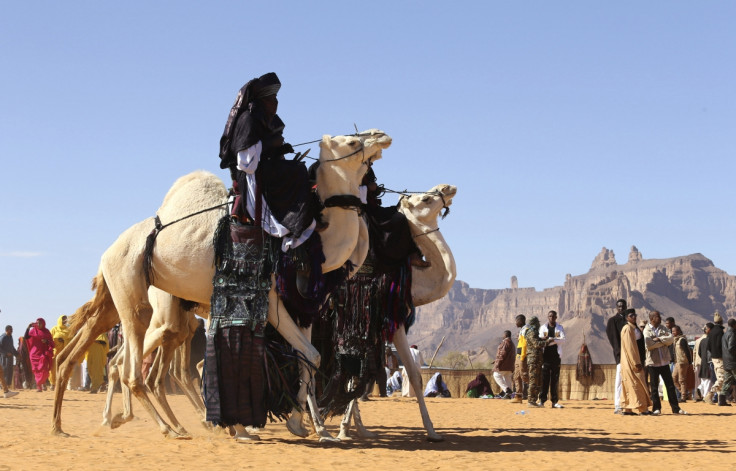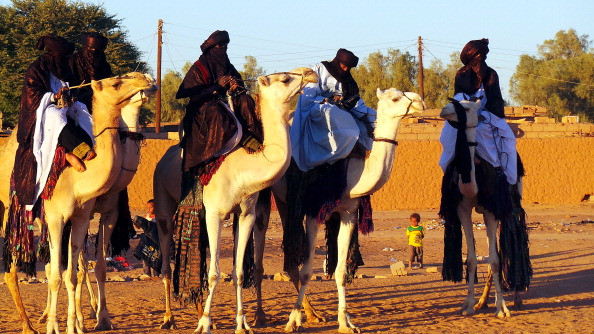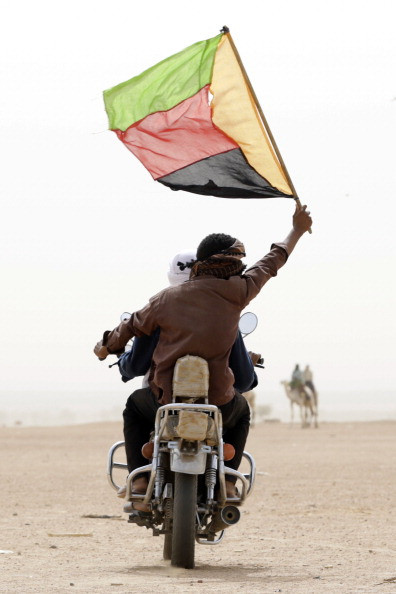Mali Tuareg Rebellion: The Fight for Independence of the Blue People

Deadly clashes have erupted in Kidal, northern Mali, between Tuareg separatists and troops during prime minister Moussa Mara's visit to the area.
The rebels have reportedly seized four civil servants and 24 Malian soldiers, claiming that the Malian government has failed to promote peace talks and resolve a conflict that erupted in 2012.
As tensions escalate between the two warring sides, IBTimes UK looks at the history of the Tuareg and the reasons behind their rebellion in Mali.

Who are the Tuareg?
The Tuareg (an Arabic name which translates into the English "ways" or "paths taken") live in North African countries, mainly in Mali, Niger and Algeria.
Living off cattle-grazing activities, they often move across national borders and are divided into clans, each led by its chief, the amghar.
Their society is hierarchical with a clear distinction between clerics and vassals.
After the adoption of Islam, a separate class of religious clerics, the Ineslemen or marabouts, became integral to Tuareg social structure.
Tuareg women do not wear the veil. Men do it after they reach manhood.
The most famous Tuareg symbol is the Tagelmust : an often indigo blue-coloured veil also known as the Alasho. For this reason, the Tuareg are sometimes referred to as the Blue People.
During the 4th or 5th century they expanded their territories under the leadership of Queen Tin Hinah who was responsible for uniting different tribes living in different areas.
The Tuareg used to be Animists (the belief that everything has a soul) until the incursion of Arabs into North Africa spread Islam among the community.
They speak the Tuareg language, a branch of the Berber languages.
During the colonial era, they opposed invasion by foreign countries but, after several massacres, were forced to sign peace treaties. Their territories were divided into confederations, each ruled by a chief.
After many African countries gained independence during the 1960s, the Tuareg found themselves in conflict with neighbouring African groups and newly-formed governments, over religion and culture as well as national boundaries.

Mali First Tuareg Rebellion
Following Mali's independence in 1960, the Tuareg started a protest against the new government, accusing it of discrimination against their wandering lifestyle.
The uprising, known as the First Tuareg Rebellion, concluded in 1964 following a harsh crackdown on dissidents by the government.
Members of the Malian Armed Forces are believed to have killed innocent people as well as imprisoning and torturing many protesters.
According to the paper That Desert is Our Country: Tuareg Rebellions and Competing Nationalisms in Comtemporary Mali Tuareg rebels stated their causes.
"We fight for our independence... [but] the leaders have no patience. They throw us in prison for no reason... We are beaten and enchained in front of our women and children. There also is the marriage act which does not conform to Muslim custom. We are against Mali because all its institutions are anti-religious and against us. We want our independence."

Mali Second Tuareg Rebellion
Resentment for the government's harsh suppression of the revolt simmered among the Tuareg for years, exploding in a second uprising in 2012.
Tuareg members of the National Movement for the Liberation of Azawad (MNLA) waged a war against the Malian government to win independence for the northern region of Azawad.
The revolts resulted in the ousting of the then president Amadou Toumani Touré and the suspension of the constitution of Mali.
Following the coup, the MNLA took control of three cities in the northern part of the country, and proclaimed Azawad's independence from Mali.
Tuareg nationalists and Islamists struggled to reconcile their conflicting views for the new state and, after several clashes, the MNLA renounced their claim of independence for Azawad and engaged with the Malian government in negotiations on its future status.
Clashes between Tuareg rebels and the Malian government in Mali continue to this day.
Following the recent incident in Kidal, prime minister Mara has declared the Malian government is now "at war with the rebels".
© Copyright IBTimes 2025. All rights reserved.






















